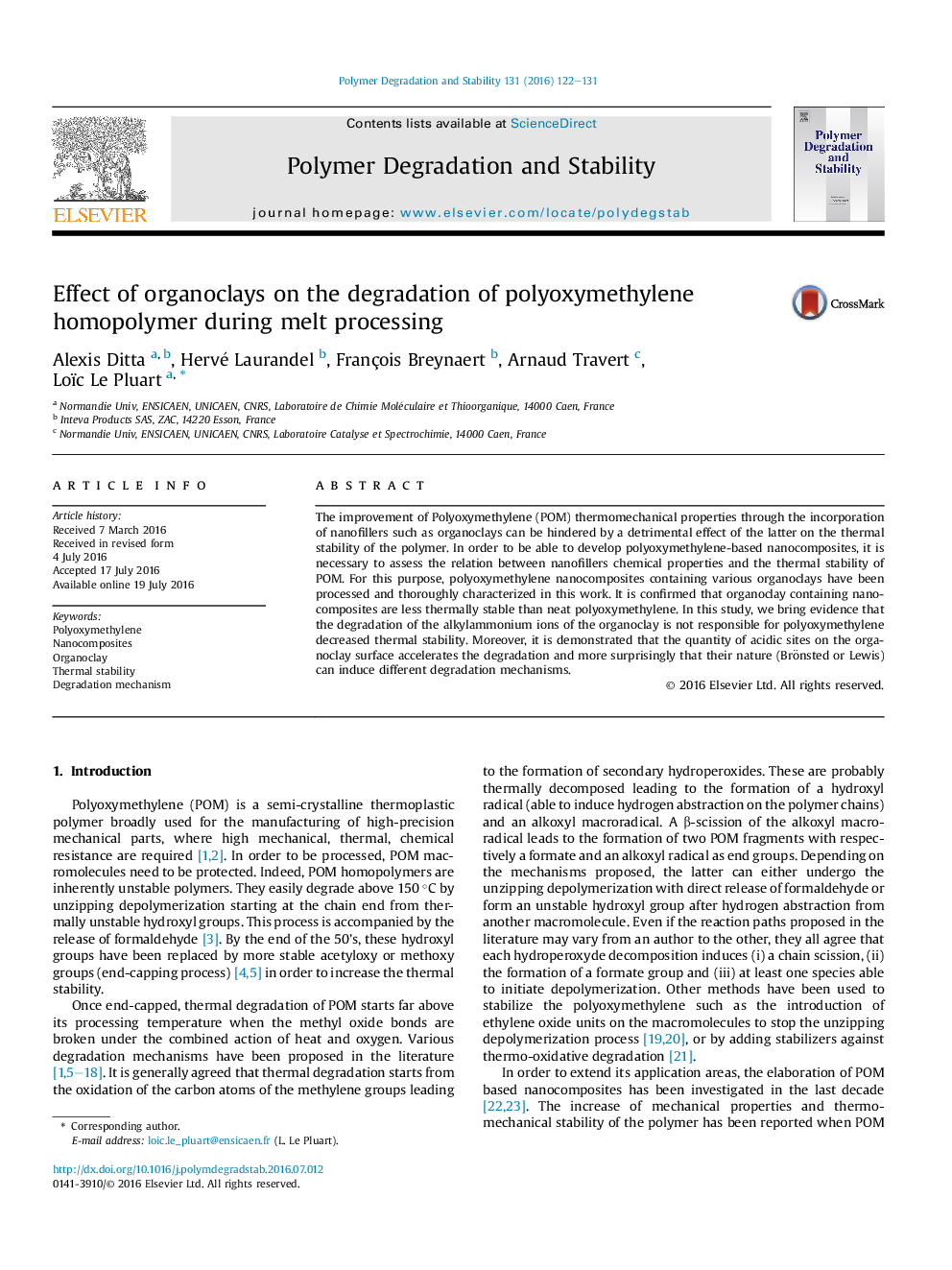| Article ID | Journal | Published Year | Pages | File Type |
|---|---|---|---|---|
| 5201050 | Polymer Degradation and Stability | 2016 | 10 Pages |
Abstract
The improvement of Polyoxymethylene (POM) thermomechanical properties through the incorporation of nanofillers such as organoclays can be hindered by a detrimental effect of the latter on the thermal stability of the polymer. In order to be able to develop polyoxymethylene-based nanocomposites, it is necessary to assess the relation between nanofillers chemical properties and the thermal stability of POM. For this purpose, polyoxymethylene nanocomposites containing various organoclays have been processed and thoroughly characterized in this work. It is confirmed that organoclay containing nanocomposites are less thermally stable than neat polyoxymethylene. In this study, we bring evidence that the degradation of the alkylammonium ions of the organoclay is not responsible for polyoxymethylene decreased thermal stability. Moreover, it is demonstrated that the quantity of acidic sites on the organoclay surface accelerates the degradation and more surprisingly that their nature (Brönsted or Lewis) can induce different degradation mechanisms.
Related Topics
Physical Sciences and Engineering
Chemistry
Organic Chemistry
Authors
Alexis Ditta, Hervé Laurandel, François Breynaert, Arnaud Travert, Loïc Le Pluart,
